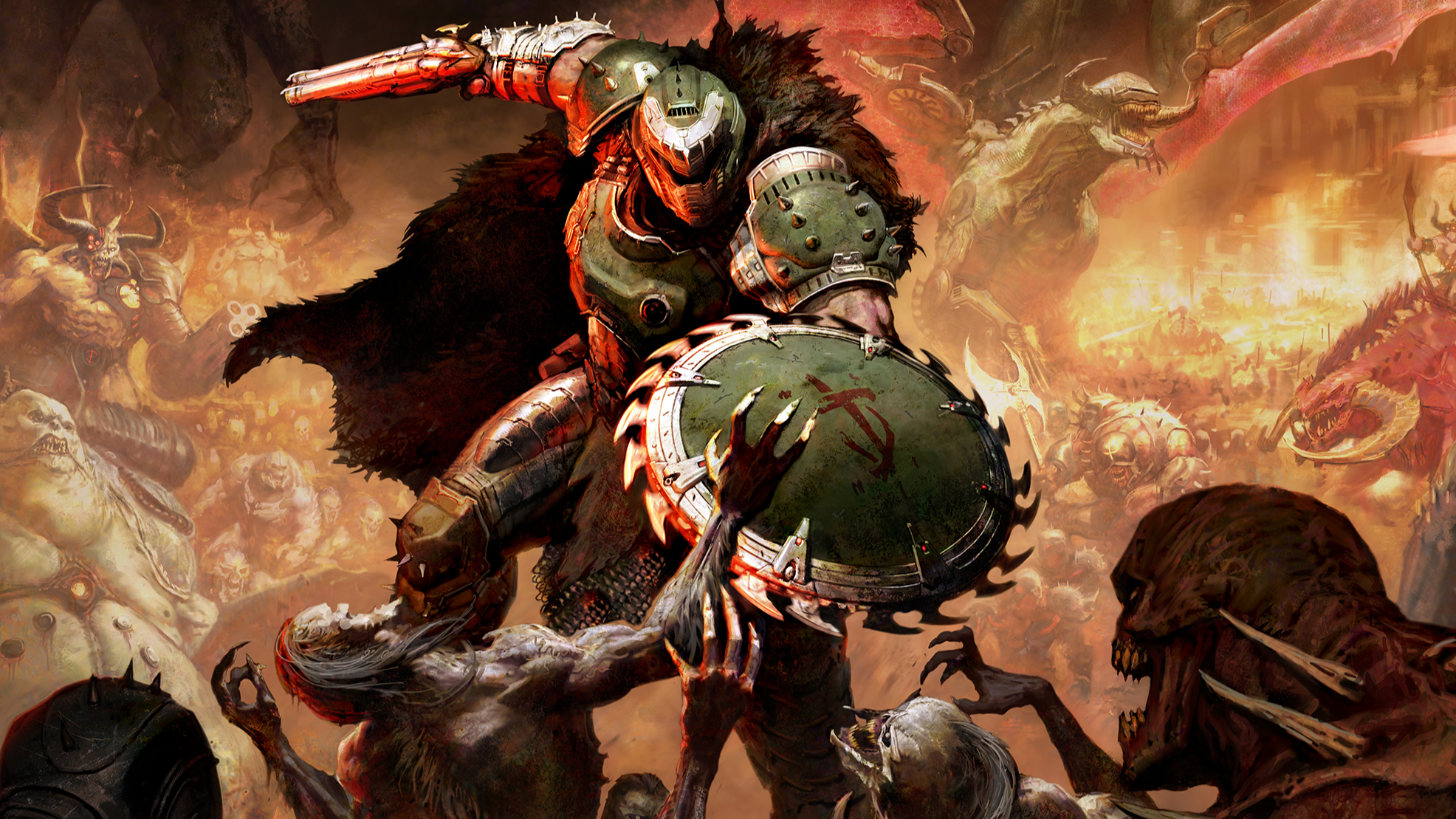
Even with strings attached, Lies of P holds its own.
There was a moment, after watching Pinocchio carve through his 200th rampant puppet with a squeal of grinding gears, when I wondered how we got here as a people. Impossibly, in a year where Elden Ring’s expansion is still waiting in the wings and Lords of the Fallen is reusing the name of 2014’s most middling Soulslike, our best shot at an off-brand Dark Souls is a Korean-Italian puppet and his chatterbox cricket companion.
What is it? A Soulslike reimagining of Pinocchio.
Release date: September 18, 2023
Expect to pay: $59.99 USD / £49.99 GBP
Developer: Neowiz
Publisher: Neowiz
Reviewed on: Intel i7-8700K, RTX 3070, 32GB RAM
Multiplayer: No
Steam Deck: Playable
Link: Steam
But somehow you can put an oversized bonesaw in Pinocchio’s hands and it just feels right. While Lies of P trips over some mechanical clumsiness and can’t escape its inspirations, it’s a competent action game with a unique toolset for experimentation. Maybe more impressively, through the grim spectacle of puppet violence, it’s a successful gothic folktale reimagining.
Pinocchio is cool now. That simple assertion is the source of a lot of Lies of P’s joy: Instead of the jolly singing puppet, he’s a blank-faced metal death machine with a strong Timothee Chalamet aura. He’s the kind of weaponized pretty boy you need when “Ergo,” the miraculous, mysterious fuel powering your city’s puppet automata workforce, turns those same puppets into a legion of homicidal robots. It’s such an absurd fiction that even in spots where the gameplay falters, knowing I was fighting as Pinocchio without the whole thing feeling ridiculous was a source of almost manic, surreal glee.
Uncanny resemblance
Pinocchio’s main combat options are built from standard Soulslike pieces: I’ve got a dodge, light and heavy attacks—no shields, but I can block with any weapon. There’s some Sekiro in here, too. Perfect Guards nullify damage if I block during a tight parry window, and building up Stagger damage on enemies opens them to execution attacks. And of course Bloodborne’s DNA filters through, with the chance to attack and regain health lost from blocked chip damage. Lies of P pairs the familiar with audiovisual heft: Pinocchio’s gears grind as he attacks and his hits land with sprays of sparks, giving a satisfying impact to the piston-driven steel behind his weapon swings.
Unfortunately, Lies of P doesn’t always benefit by inviting the comparison. Pinocchio doesn’t transition between actions as smoothly as the muscle memory I’d built up from Dark Souls would expect, which cost me a few victories.
Ergo serves as the souls equivalent. The similarities continue, straight through the interface design and Krat’s distinctly Yharnam vibe. I won’t lie: the borrowing from its Souls forebears is stark. At one point, while descending into some spooky woods after a boss fight in a church against a giant mutated priest, I couldn’t shake the awareness of how closely it matched the sequence of beats I’d played in Bloodborne.
Weapon assembly is the one piece of combat in Lies of P that feels truly distinct from anything FromSoftware’s done
Even one of Pinocchio’s defining abilities, his Legion Arm, feels like a FromSoft appropriation. It’s a metal limb that I can swap out at bonfires—sorry, “Stargazers”—to equip different combat gadgets. It’s like having a Swiss Army Knife for an arm, if a Swiss army knife had a flamethrower, an acid launcher, and a Mega Man-style arm cannon that shoots a delayed charge that embeds into enemies.
In other words, the Legion Arms are a hell of a lot like the prosthetic gadgets in Sekiro, except here they’re flashier than they are effective. Without speccing Pinocchio to emphasize them, the couple uses I had available at each respawn weren’t impressive enough that I’d bother burning consumable refill items, like a cool toy that’s too much of a hassle to regularly play with. It’d probably take other Pinocchios heavy investment in a specific stat for Legion Arms to really shine. I mostly stuck with the grappling hook-like Puppet String, which pulls enemies to me and after an upgrade lets me zip to them like Spider-Man.
Workshopping weapons
With Pinocchio’s robot strength, his finishers literally scrap enemies. (Image credit: Neowiz)
Pinocchio’s built-in arm grinder restores weapon durability. (Image credit: Neowiz)
(Image credit: Neowiz)
Puppets aren’t the most horrifying things Pinocchio fights… (Image credit: Neowiz)
…but the puppet babies come close. (Image credit: Neowiz)
(Image credit: Neowiz)
Weapon assembly is the one piece of combat in Lies of P that feels truly distinct from anything FromSoftware’s done. Weapons in Lies of P are built from two pieces:
The blade, determining base damage, defense, and damage typeThe handle, determining attack animations and how its damage scales with stats
Each part also contributes one of your weapon’s two Fable Arts—resource-consuming special attacks like Elden Ring’s skills. Finding a weapon means I can immediately disassemble it and mix-and-match its blade and handle however I want. If an enemy seems like it’s resistant to my sword’s slash attacks, I can swap in a pickaxe head to try blunt damage.
Unfortunately boss weapons can’t be disassembled—a shame, because some offer the game’s most interesting movesets. But otherwise, any blade can be paired with any handle, even if it shouldn’t be. Can I slap a dagger blade on a greatsword handle? Absolutely. A billy club on the stab-centric moveset of the rapier hilt? Of course, but I won’t like the results. I’m free to experiment as I’d like, thanks to plentiful upgrade materials and the ability to adjust a handle’s scaling to better align with my build investments.
By the end of my playthrough, my weapon of choice paired the nimble attack animations of a curved greatsword handle with the reach, damage, and defensive bulk of a massive bonesaw blade. The lack of any multiplayer means I couldn’t measure my cleaver against the rest of the world’s weapons in glorious Pinocchio combat, though, which feels like missed puppetential.
Failed start
(Image credit: Neowiz)
Lies of P also adds a skill tree to Pinocchio’s progression, thanks to his upgradable—prepare yourself— “P-Organ.”
Unfortunately, a mishap with my P-Organ (it happens to a lot of us) made the first half of my playtime miserable. Every fight felt stiff, and I never got more comfortable with the combat. Turns out, it’s because I skipped over an early P-Organ upgrade to Pinocchio’s dodge that so dramatically changed how responsive the game felt, I’m baffled it’s optional in the first place. Lies of P is so much better in the hands when you aren’t playing it with the equivalent of Goku’s weighted training clothes slowing you down.
I’ve still got complaints, even with a functional dodge. Just about every enemy has a heavy attack that can only be blocked with a Perfect Guard, but the parry windows are too inconsistent to be reliable. In places Lies of P has learned the wrong lessons from its role models’ worst moments: enemies can launch into long, relentless combos that’ll eat my health bar if I fumble a single dodge. Others have long windows after their attacks to continue into a combo, but they won’t always, pausing and then reacting in a way that feels cheap. I’ll dodge a puppet’s first swing, see what’s been a safe opening in other fights, and take a hit during my attack’s wind-up when I can’t cancel into a dodge. At times it seemed like all my options were bad ones when an attack was coming my way.
(Image credit: Neowiz)
(Image credit: Neowiz)
(Image credit: Neowiz)
Sophia, aka the Blue Fairy, aka level-up lady. (Image credit: Neowiz)
Even against mechanical enemies, combat can get gnarly. (Image credit: Neowiz)
Lies of P’s hub area, Krat Hotel. (Image credit: Neowiz)
(Image credit: Neowiz)
Somehow, Lies of P pulls off its gritty Pinocchio retelling
There’s a mismatch between parts of Lies of P’s combat logic, too. Legion Arms and my weapon’s Fable Arts are meant to be core elements of my personal combat philosophy, but stingy resource management keeps me from reaching for them. When boss fights already expect me to juggle my health, stamina, and weapon durability, I’m not going to fumble for consumables to top up my Legion and Fable meters when I can just go with a good old weapon swing.
Some choice boss fights offer that good Soulslike feeling of learning the choreography to a dance; others felt like rolling the dice, hoping I’d luck into a gentle string of attack patterns, especially when the game started dipping regularly into bosses with multiple health bars. Complicating this further, aside from brief side paths for hidden items and opening doors for shortening your corpse runs, Lies of P is a linear game. If I was stuck bashing my head against a multi-phase boss, I couldn’t bounce over to optional zones or alternate routes for a change of pace.
Still, after realizing I could be dodging attacks more than a third of the time, I had some thrilling moments marching Pinocchio into battle with my custom-built puppet cleaver. Even when I was stuck on a one-way road in puppet purgatory, the scenery softened the blow. Lies of P has some truly gorgeous environmental art, benefiting from attention to architectural detail and lush lighting tech. Some of Lies of P’s best moments came when I turned a corner and was met with a lovingly-composed line of sight across the fog-blanketed ruin of Krat, puppet corpses impaled on the spokes of the entertainment district’s ferris wheel as a warning from the city’s survivors.
And the fits? The fits are excellent. I’ve picked up a whole wardrobe of costumes, from Bloodborne-ass dusters to fancy-lad frills, which I can pair with filigreed animal masks and wearable donkey heads. Pinocchio can chart some bold courses for fashion, whether I’m in the mood for a look that says “lethal street-stalker” or “unhinged robot urchin.”
The nose knows
Pinocchio can pick up some stylish looks. (Image credit: Neowiz)
(Image credit: Neowiz)
(Image credit: Neowiz)
(Image credit: Neowiz)
As far as the lies go, they aren’t very exciting, despite dialogue choices being a novel addition to this type of game (and how big a deal Lies of Pmakes of Pinocchio being the only puppet who can lie). They act as moments where I had to choose between lying to be kind, becoming more human in the process, or just being a little asshole. But those dull lies have an interesting outcome, with implications for the story that I enjoyed puzzling out.
Somehow, Lies of P pulls off its gritty Pinocchio retelling, managing the impossibility of incorporating elements from both the folktale and the 1940 film without feeling, y’know, absurd. Even when moments of spotty localization threatened the vibe, Lies of P can achieve an arrestingly creepy tone (though it’s still only the second-darkest version of Pinocchio released in the last 12 months).
I didn’t start the year expecting to be compelled by the connections between Pinocchio’s origins, the puppet frenzy, a cursed miracle fuel, and wishing on stars, but here we are. Crickets lead you to strange places.






